Anghiari
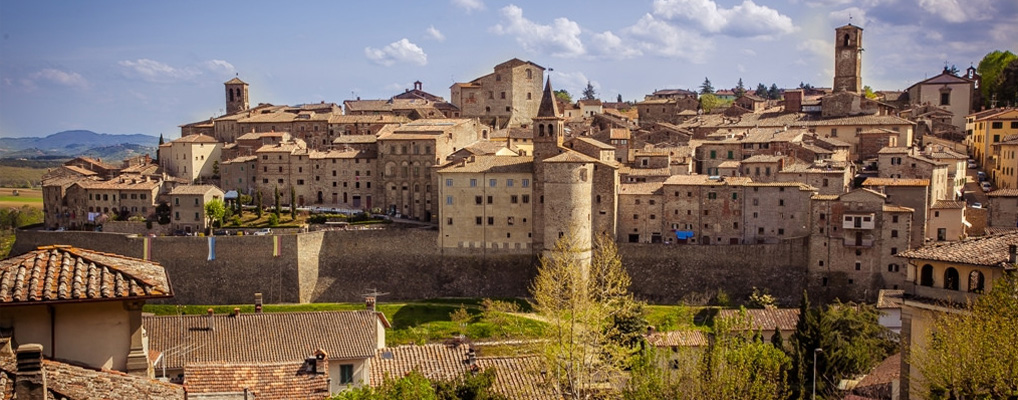
A wonderful medieval village on the slopes of the hills between the Sovara stream and the Tiber valley. His name is linked to a famous battle (Battle of Anghiari) of 1440, fought in the plain of Anghiari and painted by Leonardo in the salon of Palazzo Vecchio in Florence. In the heart of the historic center is Palazzo Taglieschi, the seat of the State Museum, which collects valuable artistic artefacts (a Jacopo della Quercia polychrome Madonna made of wood, robbian crockery and a positive table organ of the ‘500 still functioning). In the spring, the alleys and lanes of the ancient village are lured by curious and the shops open their doors to the numerous visitors who every year do not miss the opportunity to visit the traditional Artisan Market and Valtiberina Tuscany Exhibition.
Sansepolcro
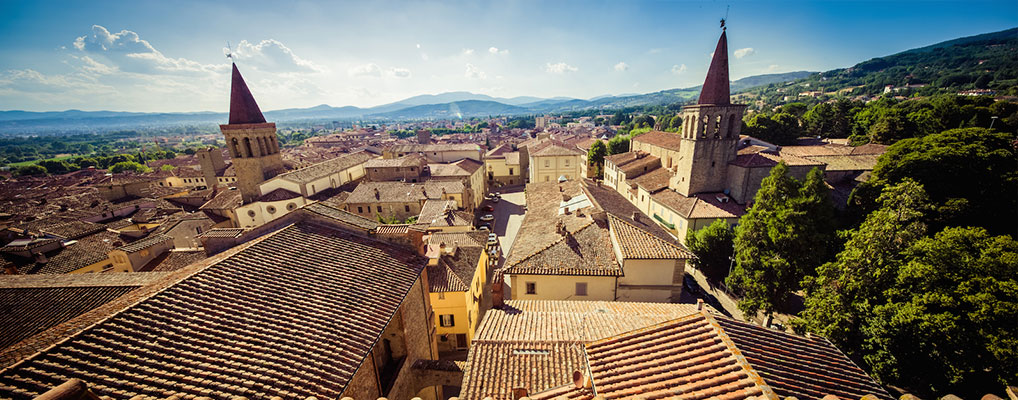
An artistic itinerary along with Piero della Francesca, Rosso Fiorentino, Luca Signorelli and Alberto Burri.
In Sansepolcro you can enjoy the experience of walking around the city among the Civic Museum with paintings of Piero della Francesca, such as “Il Polittico della Misericordia”, “La Resurrezione”, “San Giuliano ” and “San Ludovico”, the Palazzo delle Laudi with the Logge by Giorgio Vasari, the “Volto Santo” at the Cathedral, the “Deposizione” of Rosso Fiorentino and the Aboca Herbal Museum. By car enjoy a trip in full relax going to Monterchi, Caprese Michelangelo, Anghiari and Pieve Santo Stefano.
Sansepolcro is an artistic place which offer you the opportunity to experience lots of beautiful excursions in every moment of the year, trying to satisfy all your preferences.
Cortona

Those wanting to know more about the town’s history and ancient and contemporary art can not miss a visit to the two town museums, the Museo dell’Accademia Etrusca and the Museo Diocesano.
Created as an expression of the Etruscan Academy’s cultural engagement in 1727, the Museo dell’Accademia spreads over 14 rooms of the Palazzo Casali in the Piazza Signorelli. The museum houses Etruscan, Roman and Egyptian art collections.
The Museo Diocesano is housed in the former upper-church of the “Gesù” and annexed rooms. Located across from the Cathedral, the church, fronted by a monocuspidate unostentatious façade in local sandstone with decorations of 17th century , consists of an upper-church and a lower-oratory connected by an interior stairway. The interior renovation plan was drafted by Filippo Berrettini and Giorgio Vasari worked on the oratory decoration. On the wall at the far end of the upper-church hangs one of Beato Angellico’s sublimest artworks, the “Annunciazione”. Also in the museum are paintings by Sassetta (16th century), Duccio di Boninsegna (14th century) and Luca Signorelli, amongst which stands out the latter’s dramatic “Deposizione”. Definitely worth seeing are the two streets Via del Gesù and Via Iannelli, still showing a typical medieval layout.
Castiglion Fiorentino
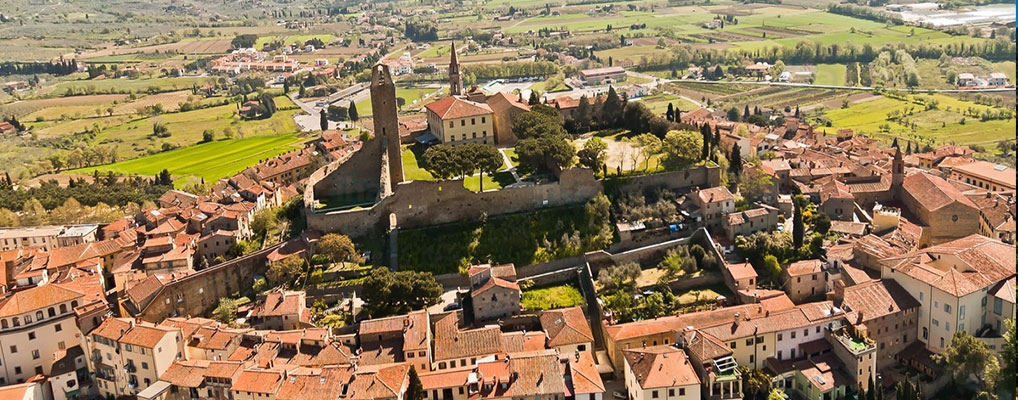
With an Etruscan-Roman origin, Castiglion Fiorentino preserves almost intact the medieval walled town dominated by Cassero. The recent archaeological excavations in the square have led to the discovery of a sacred area dating back to the 5th century BC. In the Town Art Gallery are precious works of jewelery of the thirteenth century and paintings by Margarito, Taddeo Gaddi, Bartolomeo della Gatta and Giorgio Vasari. The 16th-century palace in front of Palazzo Comunale is like a natural balcony from which to admire the Val di Chio, a natural passage between Valdichiana and Valtiberina. The appointment with culture, sports, music and wine and food is in the spring with the May Castiglionese, a month full of events. The third Sunday of June is dedicated to the Palio dei Rioni Castiglionesi, a horse race that takes place in the square Garibaldi, outside the walls.
Foiano della Chiana
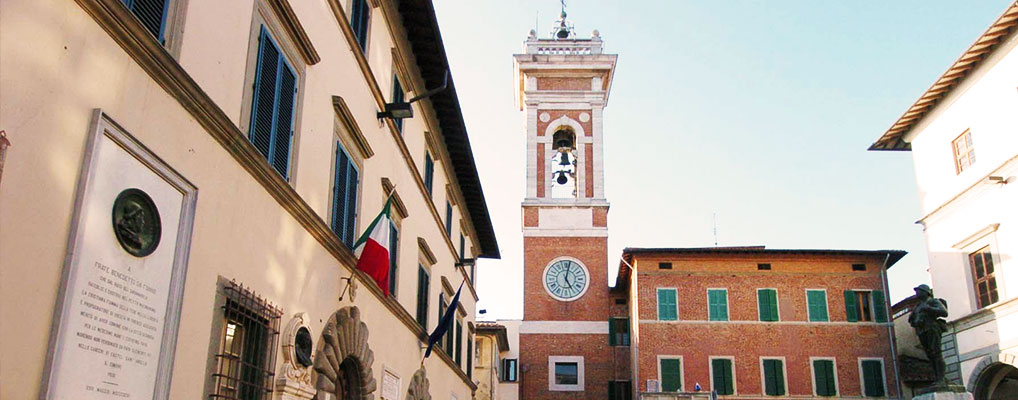
Foiano is located in the center of Valdichiana. The historic center, enclosed by two walled enclosures, features the signs of Renaissance art. Definitely it worth to visit the Church of SS. Trinity guarding a canvas of the Pomarancio, the Church of Santa Maria della Fraternita, from fifteenth century, which preserves a glassy terracotta attributed to Luca and Andrea della Robbia. Outside the first circle of walls is the Collegiata di San Martino which features a table depicting the Coronation of the Virgin with Angels and Saints, late opera by Luca Signorelli and a glassed terracotta, Madonna della Cintola attributed to Andrea della Robbia. A few kilometers from the historical center, in the direction of Pozzo della Chiana, stands the sixteenth-century Santo Stefano della Vittoria Temple, erected by Cosimo I as a symbol of the victory over the Senes in the Battle of Scannagallo. The historical center of Foiano becomes in the months of February and March the scenery of one of the oldest Carnevals of Italy.
Monte San Savino

It is one of the most interesting centers in Tuscany for the original elliptical plan, enclosed by walls and towers. The ancient hamlet presents, perfectly preserved, the Municipal Palace of thirteenth century. Inside there is a small museum with paintings of Aretina and Senese Schools. The remarkable religious buidings are the Collegiata and San Francesco Church painted with frescoes of Bartolo di Freddi and Taddeo di Bartolo.
Lucignano
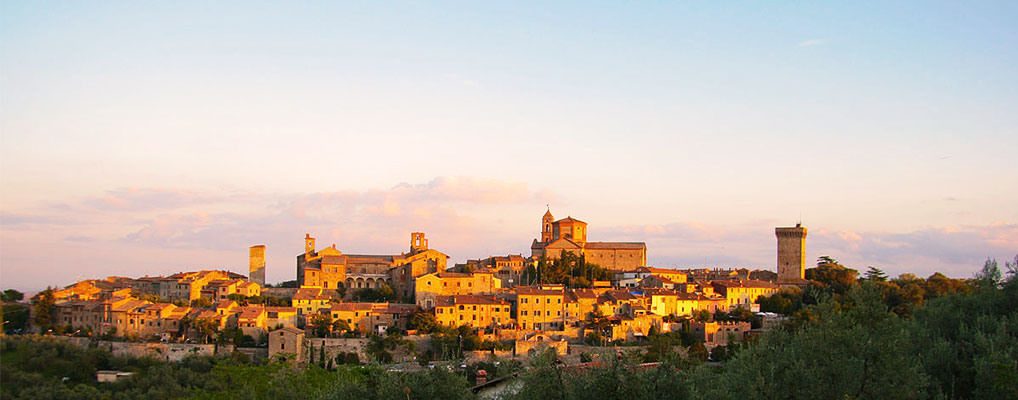
The ancient hamlet has perfectly preserved, the Palazzo Comunale, of thirteenth-century origins. Inside there is a small museum with paintings of Sienese and Aretina schools as well as a precious testimony of the late Romanesque ornamentation such as the famous reliquary “tree” of Lucignano. Noteworthy are also the religious buildings such as the Collegiate Church and St. Francis with ornate frescoes by the Sienese painters Bartolo di Fredi and Taddeo di Bartolo. Of great suggestion is the one above the first altar in the right aisle, known as “The Triumph of Death”, in which is effectively represented the precariousness of humanity. The imagination and the excitement of its inhabitants appear in the spring, on the Maggiolata Lucignanese where the sounds and colors of the flowers revive a tradition full of history and music.
Pratovecchio
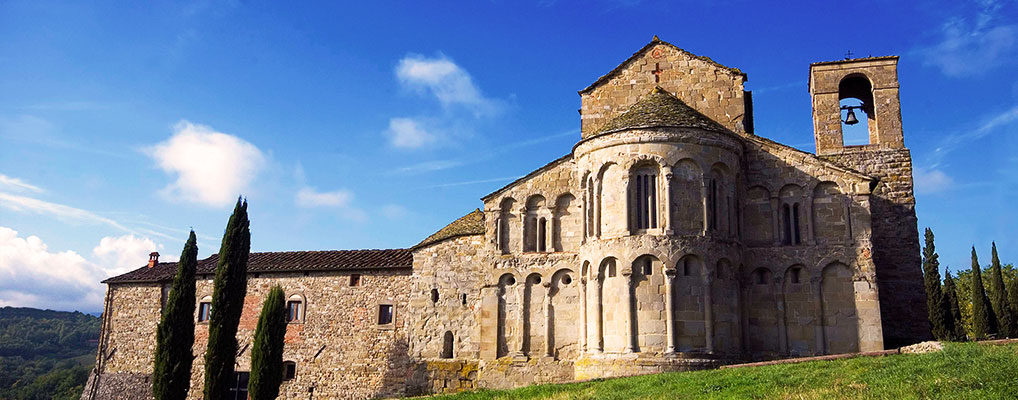
Its architecture is the expression of its history. A history of faith – witnessed by the presence in the village of two monarchs of Camaldolese and Dominican sisters – of power that has its majestic Castello di Romena, the Conti Guidi fortress, quoted by Dante in the XXX song of Hell. Not far from the village is the imposing Pieve di San Pietro in Romena, one of the greatest testimonies of Romanesque architecture in Casentino. In this city was born Paolo di Dono, said Paolo Uccello, master of the perspective. Pratovecchio hosts every two years, in September, “Forms of wood”, a manifestation that combines art, craftsmanship and wood-bound culture.
Stia

Located at the confluence of two streams, the Arno and the Staggia, the historic center is all gathered around its main square, Piazza Tanucci, lined with arcades. The homonymous street overlooks the Romanesque church of Santa Maria Assunta, with an eighteenth-century façade. In the Chapel of the Baptistery a beautiful Annunciation of Bicci di Lorenzo. Traces of the Middle Ages remain in the Palagio Fiorentino, the former residence of Count Guidi. The palace houses one of the most interesting collections of contemporary art. Not far from the town, the majestic tower of Castel Porciano dominates the whole valley in the first stretch of the Arno and the Sanctuary of Santa Maria delle Grazie completely surrounded by woods. The biennial event is the European Biennale of Fabbrile Art that exposes the best of the craftsmanship tradition of iron processing.
San Giovanni Valdarno
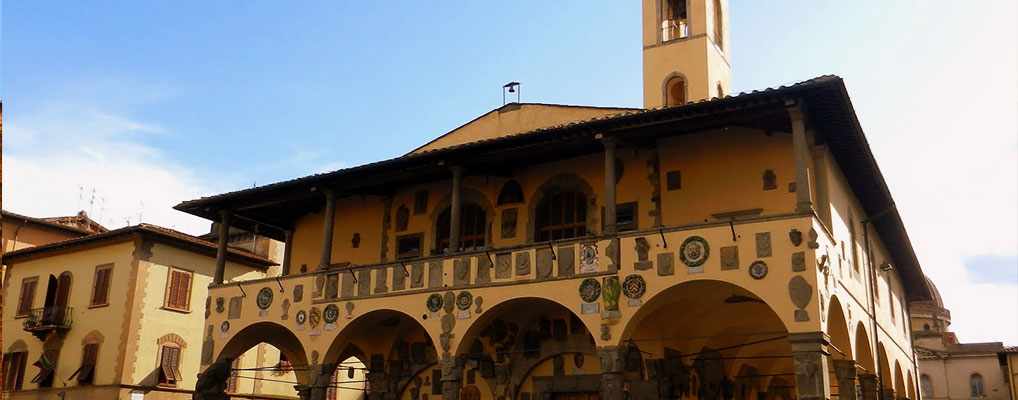
The city of San Giovanni Valdarno is one of the most important centers of the Valdarno developed along the highway of Arezzo-Florence. Here, on December 21, 1401, Masaccio was born, the innovative artist of Renaissance painting. You can visit his home. The heart of the historic center is Masaccio Square with the Pretorio Palace, designed by Arnolfo di Cambio. It is made up of impressive buildings: the 15th century Basilica of Santa Maria delle Grazie and the museum that has a rich pictorial collection and a beautiful Annunciation of the Blessed Angelic; The 14th-century Church of St. Lawrence is adorned with frescoes of the 400th by the painter Giovanni di Ser Giovanni called “Scheggia”, the younger brother of Masaccio. In Piazza Cavour is placed the Pieve di San Giovanni Battista dating back to the first half of the 14th century. An important cultural event is the Valdarno Cinema Fedic, a cinematic event which takes place every year in April.
Montevarchi
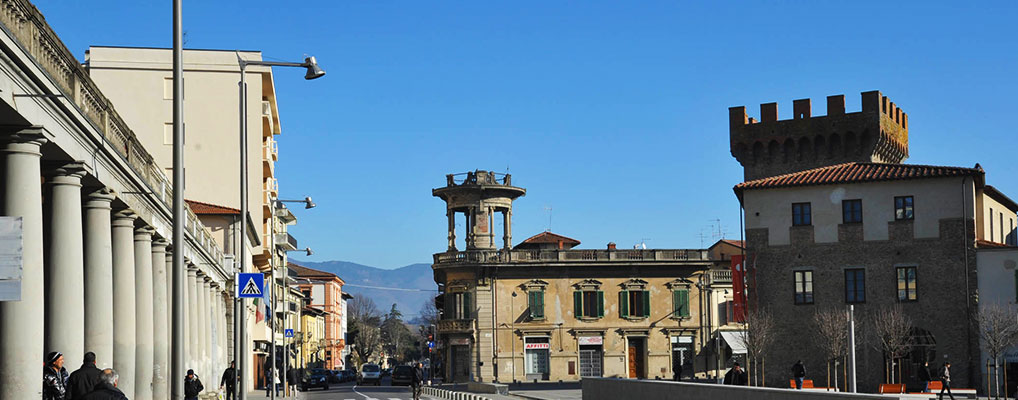
One of the major shopping malls in the valley. The historic center still retains a medieval urban layout gathered around its central square, Piazza Varchi. The Pretorio Palace with coat of arms of podestà on the facade, the Collegiate of St. Lawrence dates back to the thirteenth century, but rebuilt a few centuries later by Massimiliano Soldani Benzi. In the former sacristy, the seat of the Museum of Sacred Art, the robbian temple attributed to Andrea della Robbia and the Delivery of the Relics of Sacred Milk by Count Guerra, represent one of the highest testimonies of art and mastery of enameling terracotta by the famous Florentine family. In the characteristic Via dei Musei, every fourth Sunday of the month (except July and August) takes place the Antiques Market.
